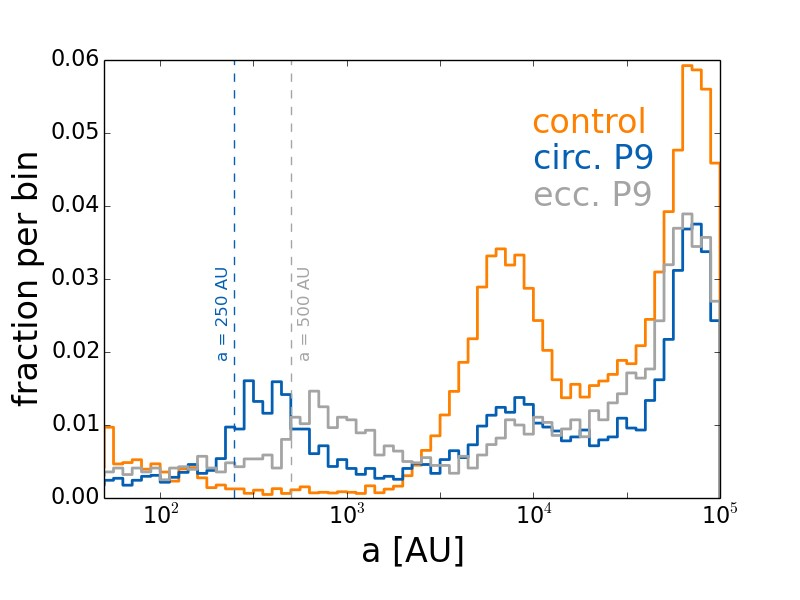The orbital element distribution of trans-Neptunian objects (TNOs) with large pericenters has been suggested to be influenced by the presence of an undetected, large planet at 200 or more AU from the Sun. We perform 4 Gyr N-body simulations with the currently known Solar System planetary architecture, plus a 10 Earth mass planet with similar orbital parameters to those suggested by Batygin and Brown (2016) or Trujillo and Sheppard (2014), and a hundred thousand test particles in an initial planetesimal disk. We find that including a distant superearth-mass ninth planet produces a substantially different orbital distribution for the scattering and detached TNOs, raising the pericenters and inclinations of moderate semimajor axis (50 < a < 500 AU) objects. We test whether this signature is detectable via a simulator with the observational characteristics of four precisely characterized TNO surveys. We find that the qualitatively very distinct Solar System models that include a ninth planet are essentially observationally indistinguishable from an outer Solar System produced solely by the four giant planets. We also find that the mass of the Kuiper Belt’s current scattering and detached populations is required be 3-10 times larger in the presence of an additional planet. Wide-field, deep surveys targeting inclined high-pericenter objects will be required to distinguish between these different scenarios.
Samantha Lawler
Another study inspired by the claim that the outer Kuiper Belt hides a large planet shaping the orbits of closer KBOs. As far as I can understand from the simulation results and conclusion, a Super-Earth should indeed influence the size and orbital properties of the Kuiper Belt significantly, but the surveys currently available are not sufficient to distinguish between the different models analyzed here. Hence ‘Planet Nine’ will have to wait direct detection or a much more thorough study of deep Kuiper Belt orbits to be confirmed.

Post a Comment